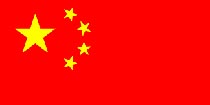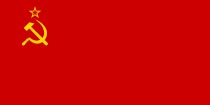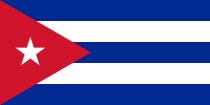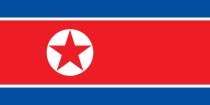
In 1950, the People's Republic of China extended diplomatic recognition to the Viet Minh's Democratic Republic of Vietnam and sent weapons, as well as military advisors led by Luo Guibo to assist the Viet Minh in its war with the French. The first draft of the 1954 Geneva Accords was negotiated by French Prime Minister Pierre Mendès France and Chinese Premier Zhou Enlai who, fearing U.S. intervention, urged the Viet Minh to accept a partition at the 17th parallel.
China's ability to aid the Viet Minh declined when Soviet aid to China was reduced following the end of the Korean War in 1953. Moreover, a divided Vietnam posed less of a threat to China. China provided material and technical support to the Vietnamese communists worth hundreds of millions of dollars. Chinese-supplied rice allowed North Vietnam to pull military-age men from the paddies and imposed a universal draft beginning in 1960. In the summer of 1962, China agreed to supply Hanoi with 90,000 rifles and guns free of charge. Starting in 1965, China sent anti-aircraft units and engineering battalions to North Vietnam to repair the damage caused by American bombing, rebuild roads and railroads, and to perform other engineering works. This freed North Vietnamese army units for combat in the South.
Sino-oviet relations soured after the Soviets invaded Czechoslovakia in August, 1968. In October, the Chinese demanded North Vietnam cut relations with Moscow, but Hanoi refused. The Chinese began to withdraw in November, 1968 in preparation for a clash with the Soviets, which occurred at Zhenbao Island in March 1969. The Chinese also began financing the Khmer Rouge as a counterweight to the Vietnamese communists at this time. China's withdrawal from Vietnam was completed in July of 1970.
The Soviet Union

The Soviet Union during the second half of the Vietnam War provided Soviet ships in the South China Sea to gave vital early warnings to NLF forces in South Vietnam. The Soviet intelligence ships would pick up American B-52 bombers flying from Okinawa and Guam.Their airspeed and direction would be noted and then relayed to COSVN headquarters. COSVN using airspeed and direction would calculate the bombing target and tell any assets to move "perpendicularly to the attack trajectory." These advance warning gave them time to move out of the way of the bombers and while the bombing runs caused extensive damage, because of the early warnings from 1968–1970 they didn't kill a single military or civilian leader in the headquarter complexes.
The Soviet Union supplied North Vietnam with medical supplies, arms, tanks, planes, helicopters, artillery, anti-aircraft missiles and other military equipment. Soviet crews fired USSR-made surface-to-air missiles at the B-52 bombers, which were the first raiders shot down over Hanoi. Fewer than a dozen Soviet citizens lost their lives in this conflict. Following the collapse of the Soviet Union in 1991, Russian officials acknowledged that the Soviet Union had stationed up to 3,000 troops in Vietnam during the war. Some Russian sources give more specific numbers: the hardware donated by the USSR included 2 000 tanks, 7 000 artillery guns, over 5 000 anti-aircraft guns, 158 surface-to-air rocket launchers. Over the course of the war the Soviet money donated to the Vietnamese cause was equal to 2 million dollars a day. From July, 1965 to the end of 1974, fighting in Vietnam was assisstsed by some 6,500 officers and generals, as well as more than 4,500 soldiers and sergeants of the Soviet Armed Forces via military schools and academies of the USSR; more than 10 thousand North Vietnamese soldiers were trained.
Republic of Cuba

The communist Republic of Cuba's, manpower contributions to North Vietnam is still a matter of debate. Reports by former U.S. prisoners of war that Cuban military personnel were present at North Vietnamese prison facilities during the war, and that they participated in torture activities, in what is known as the "Cuba Program". That there was at least a small contingent of Cuban military advisors present in North Vietnam during the war is without question and evidence indicates that Cuba's military and non-military involvement may have run into the "thousands" of personnel
North Korea

As a result of a decision of the Korean Workers' Party in October 1966, in early 1967 North Korea sent a fighter squadron to North Vietnam to back up the North Vietnamese 921st and 923rd fighter squadrons defending Hanoi. They stayed through 1968, and 200 pilots were reported to have served. In addition, at least two anti-aircraft artillery regiments were sent as well. North Korea also sent weapons, ammunition and two million sets of uniforms to their comrades in North.